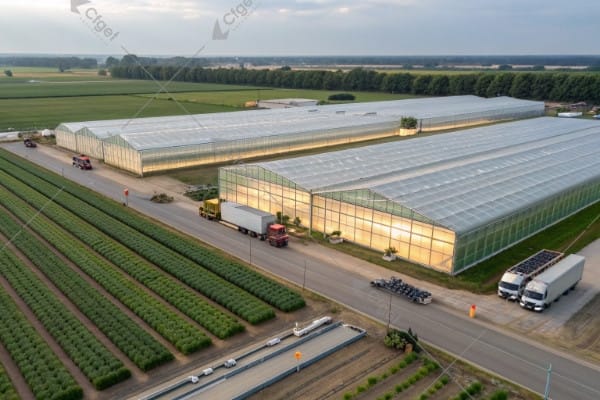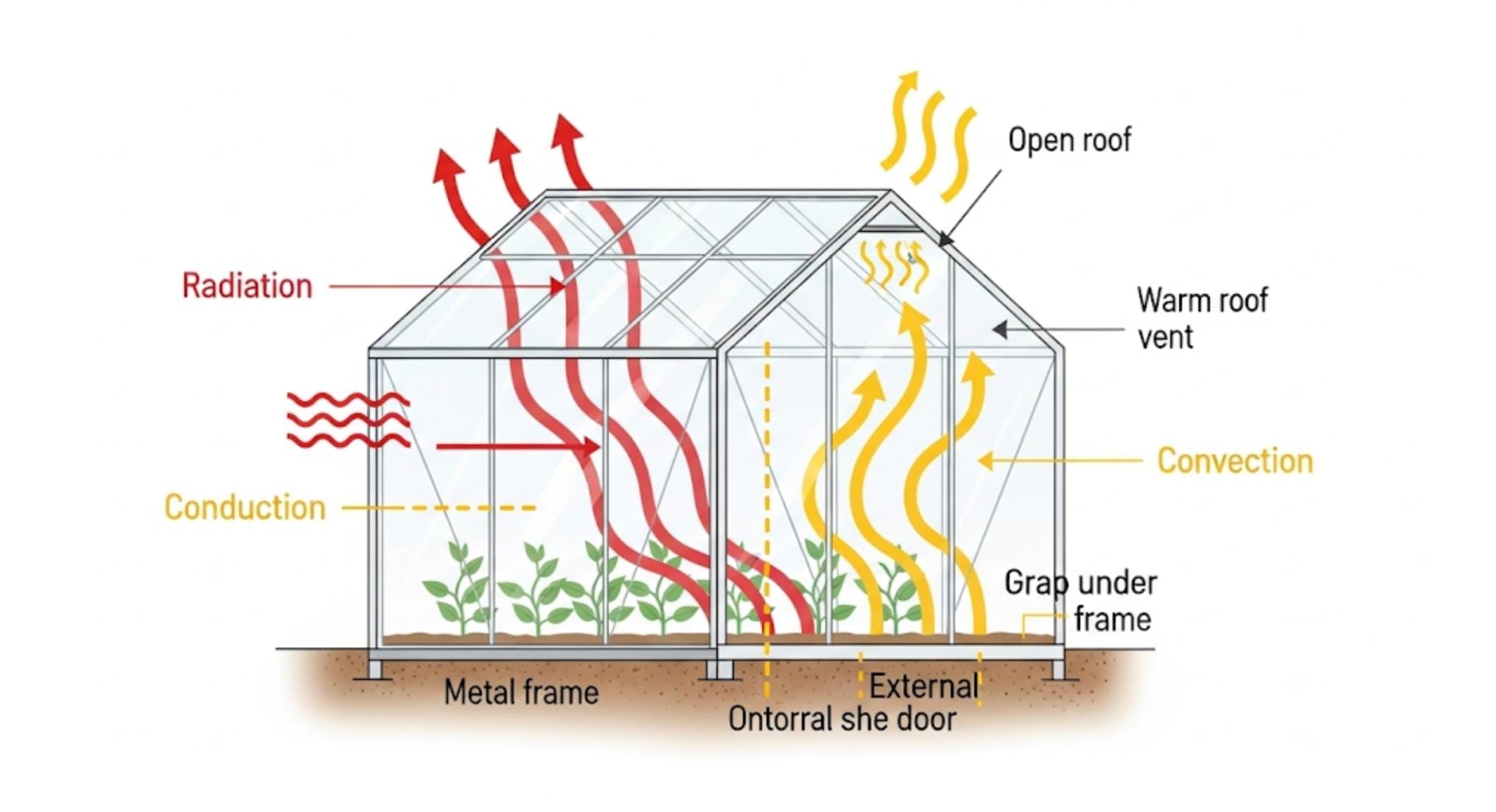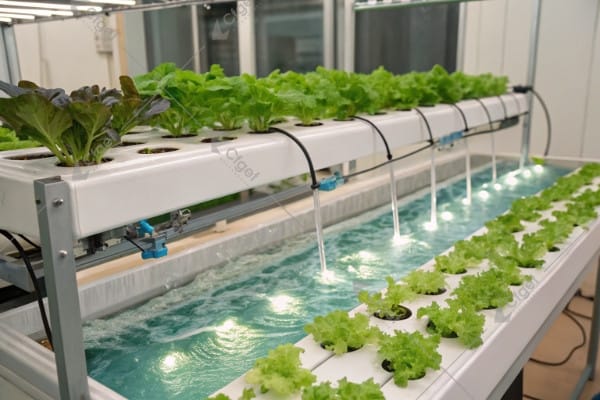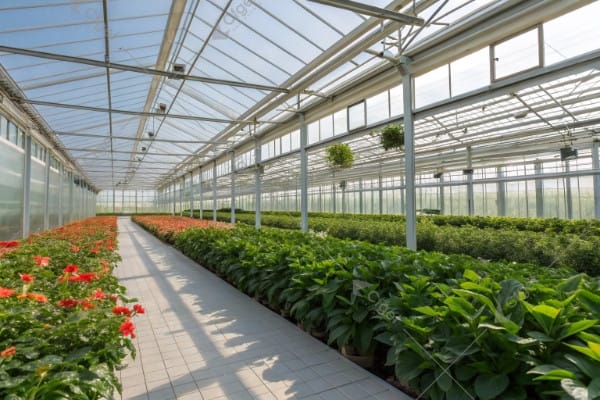Choosing your greenhouse covering feels overwhelming, right? You worry about making the wrong choice, costing you money and yield. Let us help you see clearly which material fits your needs best.
The best greenhouse glazing depends entirely on your specific climate, crops, and budget. Polycarbonate often provides a superior balance of durability, insulation, and diffused light, while glass offers maximum light transmission and longevity if breakage isn’t a major concern.
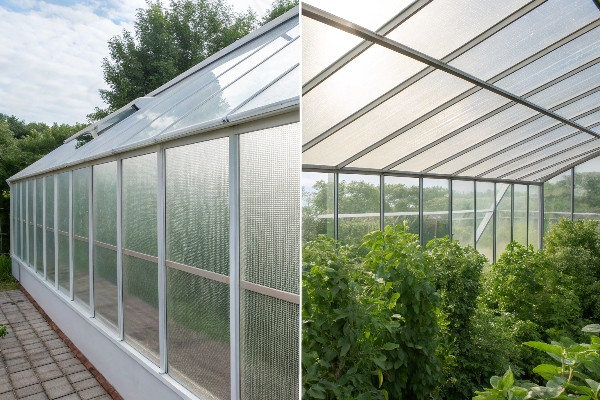
Making the right decision between these two popular materials is crucial for your success as a grower. I’ve walked through countless greenhouses over my 28 years at CFGET, and the choice of glazing impacts everything from energy bills to plant health. We need to look closely at the specific strengths and weaknesses of each option. Let’s break down the key factors growers like you need to consider, starting with safety.
Don’t Miss:——How Can You Keep a Greenhouse Warm During Winter Effectively?
Shatterproof & Safe: Key Reasons Growers Choose Polycarbonate?
Worried about shattered glass in your greenhouse? Accidents happen, storms hit, and the risk of injury or crop damage is real. Polycarbonate offers peace of mind with its incredible strength.
Polycarbonate’s high impact resistance, often over 200 times stronger than glass, makes it virtually shatterproof. This significantly reduces risks from hail, debris, or accidental impacts, protecting both workers and plants.
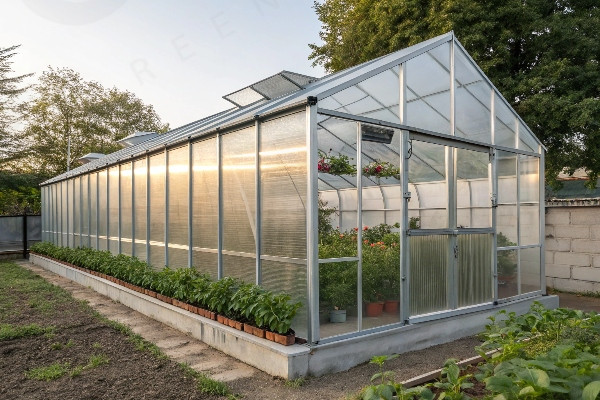
When we talk about safety in greenhouse construction and operation, impact resistance is a massive factor. I remember visiting a grower in a region prone to severe hailstorms. Their older glass greenhouses suffered significant damage almost every other year, leading to costly repairs and lost crops. After switching to a polycarbonate structure we designed, they haven’t had a single panel break due to hail. This material can withstand incredible force. Think about stones kicked up by machinery, falling tools, or even unexpected impacts during maintenance – polycarbonate handles these stresses far better than glass. Its inherent flexibility allows it to absorb impacts that would shatter glass instantly. This shatterproof nature isn’t just about preventing damage; it’s about personnel safety. Broken glass shards create hazardous working conditions. Polycarbonate eliminates this specific risk. Furthermore, polycarbonate panels are much lighter than glass panels of similar size. This makes installation easier and safer, often requiring less heavy lifting equipment and reducing strain on the greenhouse frame itself.
| Feature | Polycarbonate | Glass |
|---|---|---|
| Impact Strength | Very High (Virtually Shatterproof) | Low (Prone to Shattering) |
| Hail Resistance | Excellent | Poor to Moderate (Depends on type) |
| Weight | Lightweight | Heavy |
| Safety Hazard | Low (Doesn’t shatter) | High (Sharp shards when broken) |
| Installation | Easier & Safer | More Difficult & Riskier |
This durability is one reason we at CFGET often recommend polycarbonate, especially for growers in areas with challenging weather conditions like hail or strong winds, or even just for busy operations where accidental bumps are more likely.
Don’t Miss:——Is Glass the Best Material for Your Greenhouse Structure?
Insulation Showdown: How Polycarbonate Beats Glass in Energy Efficiency?
Are soaring energy bills cutting into your greenhouse profits? Keeping the right temperature, especially in colder climates, can be incredibly expensive. Better insulation directly translates to significant cost savings.
Multi-wall polycarbonate panels trap air within their structure, providing much better insulation (a higher R-value) than standard single-pane glass. This drastically reduces heat loss and lowers energy consumption for heating.
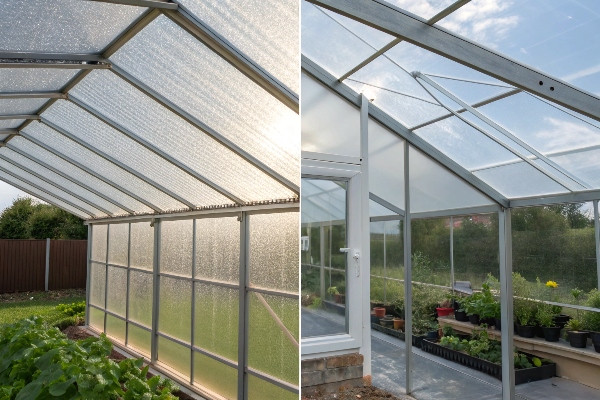
Energy efficiency is no longer a ‘nice-to-have’; it’s essential for profitable growing. This is where polycarbonate truly shines, particularly the multi-wall or twin-wall varieties we frequently use in our CFGET designs. These panels aren’t solid; they have internal channels or flutes that create insulating air pockets. Think of it like double-glazing for your windows at home, but often with even more layers possible in polycarbonate. This trapped air significantly slows down heat transfer. We measure insulation using R-value (resistance to heat flow – higher is better) and U-value (heat transfer coefficient – lower is better). A typical 8mm twin-wall polycarbonate panel might have an R-value around 1.7, while standard 3mm single-pane horticultural glass is only around 0.9. That means the polycarbonate provides almost double the insulation. What does this mean practically? In my experience working with growers in Central Asia and parts of Europe with cold winters, switching from older glass structures to modern polycarbonate ones resulted in heating cost reductions of 30-50% or even more in some cases. As our insight highlighted, this material’s strong insulation characteristic is key for colder regions, potentially reducing the required size or runtime of your heating system, saving not just money but also reducing your operation’s carbon footprint. While double-pane glass exists and offers better insulation than single-pane, it’s often heavier, more expensive, and still more fragile than polycarbonate.
| Glazing Type | Typical R-Value (Higher is Better) | Typical U-Value (Lower is Better) | Energy Efficiency | Cost Factor |
|---|---|---|---|---|
| Single Pane Glass (3mm) | ~0.9 | ~1.1 | Low | Low |
| Double Pane Glass | ~2.0 | ~0.5 | Moderate | High |
| Twin-Wall Polycarbonate (8mm) | ~1.7 | ~0.59 | High | Moderate |
| Triple-Wall Polycarbonate | ~2.5+ | ~0.4- | Very High | Higher |
Therefore, for growers prioritizing energy savings and operational cost reduction, especially those in cooler climates, polycarbonate1 presents a compelling advantage over traditional glass.
Light Quality Matters: Diffused vs. Direct Sunlight for Plant Health?
Are you struggling with inconsistent growth or scorched leaves? Getting the right amount and quality of light to every plant is crucial. Too much direct sun can be as bad as too little light.
Polycarbonate naturally diffuses incoming sunlight, scattering it evenly throughout the greenhouse. This eliminates harsh shadows and reduces the risk of burning, promoting more uniform plant growth compared to direct light from glass.
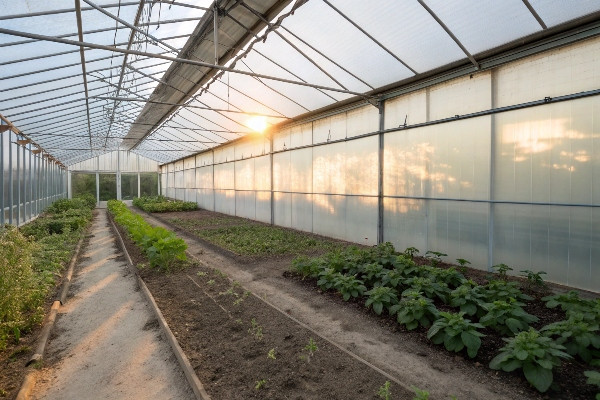
Light is arguably the most critical factor in photosynthesis and plant growth. While glass boasts very high light transmission2 (often 90% or slightly more when clean), it transmits light directly. This can create intense hot spots and deep shadows within the greenhouse. Plants directly under the sun might get stressed or even scorched, while plants in shadow receive significantly less light energy, leading to uneven growth across the crop. I’ve seen this many times – taller plants casting shadows on smaller ones, creating variability that complicates management and harvesting. Polycarbonate, especially the multi-wall types, acts differently. As light passes through the layers and internal structure, it gets scattered or diffused. Think of it like the difference between a clear light bulb (glass) and a frosted one (polycarbonate). This diffused light penetrates deeper into the plant canopy, reaching lower leaves, and illuminates the greenhouse interior much more evenly. The benefits are significant: reduced risk of sunburn on upper leaves, better light exposure for lower foliage leading to potentially higher overall photosynthesis, and more uniform crop development. Many growers find this leads to higher quality yields and easier crop management. Now, it’s important to address the insight: polycarbonate’s light transmission can decrease gradually over its lifespan (e.g., from around 80-85% down towards 70-75% after 10-15 years) due to UV degradation if it doesn’t have a good protective coating. High-quality panels, like those CFGET supplies, come with UV-resistant layers specifically designed to minimize this yellowing and degradation, ensuring good light transmission for many years. Glass, on the other hand, maintains its clarity indefinitely unless it gets dirty or etched. However, for many crops, particularly vegetables and fruits mentioned in the insight, the benefits of diffused light often outweigh a slight decrease in total transmission over time.
| Feature | Polycarbonate (Twin/Multi-wall) | Glass (Single Pane) |
|---|---|---|
| Light Type | Diffused | Direct |
| Light Distribution | Even, fewer shadows | Uneven, harsh shadows |
| Risk of Plant Scorching | Low | High |
| Canopy Penetration | Deeper | Shallower |
| Initial Transmission | Good (e.g., 80-88%) | Very High (e.g., ~90%) |
| Long-term Transmission | Can decrease slowly (UV dependent) | Stays high (if clean) |
| Suitability | Good for most crops, reduces stress | Best for maximum light needs |
Ultimately, the "better" light depends on the crop. Some highly light-intensive crops in regions with less ambient light might favour glass, but for general cultivation, especially where heat stress is a concern, the diffused light from polycarbonate is often superior.
Cost vs. Lifespan: Making the Smartest Greenhouse Investment?
Budget is always a concern, right? You need glazing that fits your budget now but won’t cost you more in the long run. It’s about finding the best value over the entire life of your greenhouse.
Polycarbonate generally has a higher upfront material cost than basic glass, but its durability, energy savings, and potentially lower installation/structural costs often lead to a lower total cost of ownership over its lifespan.

Making a smart investment means looking beyond the initial price tag. Let’s break down the economics. On a square-foot basis, basic single-pane horticultural glass is often the cheapest option upfront. Twin-wall polycarbonate usually costs more than single glass but less than high-quality double-pane glass. However, the material cost is only part of the equation. Because polycarbonate is so much lighter than glass, it often allows for a lighter, less expensive support structure (the greenhouse frame). Fewer posts, wider spacing – this can lead to significant savings on the frame construction, sometimes offsetting the higher panel cost. Installation costs can also be lower due to ease of handling and less risk of breakage during the build. Then comes the operational cost – the energy savings we discussed earlier. Over 10 or 15 years, lower heating bills from polycarbonate’s better insulation can add up to substantial amounts, far exceeding the initial cost difference. We also need to factor in lifespan and replacement risk. High-quality polycarbonate panels with UV protection are typically warranted for 10 years against yellowing and loss of light transmission2 and can realistically last 15-20 years or more. Glass can theoretically last much longer, if it doesn’t break. But in areas with hail (as per the insight), high winds, or even just the risk of accidental damage, the cost of replacing broken glass panels (materials and labor) adds up. Polycarbonate’s impact resistance virtually eliminates this replacement cost. So, when we calculate the Total Cost of Ownership (TCO), considering initial cost, structural requirements, installation, energy use, and replacement risk over 15-20 years, polycarbonate frequently emerges as the more economical choice, providing better long-term value.
| Factor | Polycarbonate | Glass (Single Pane) | Glass (Double Pane) |
|---|---|---|---|
| Initial Material Cost | Moderate | Low | High |
| Structural Needs | Lighter Frame Possible | Heavier Frame Required | Heaviest Frame Required |
| Installation Cost | Lower | Moderate | Higher |
| Lifespan (Typical) | 10-20+ years (UV protected) | Very Long (if not broken) | Very Long (if not broken) |
| Replacement Risk | Very Low (Impact Resistant) | High (Fragile) | High (Fragile) |
| Energy Efficiency | High (Good Insulation) | Low (Poor Insulation) | Moderate (Better Insulation) |
| Total Cost Ownership | Often Lower over 15-20 yrs | Can be high due to energy/risk | Often Highest |
I always advise clients to think about the lifetime value. A slightly higher initial investment in polycarbonate can pay dividends through durability, safety, and energy savings year after year.
Conclusion
Choosing between polycarbonate and glass isn’t simple, but focusing on safety, energy efficiency, light quality, and long-term cost helps. Polycarbonate often proves superior for durability, insulation, and diffused light needs.

